All that is solid melts into air, 2021/22
Prayer candle, wax, glass, bitcoin form made from lead, burnt packaging of the ice cream brand Klondike, transparent lacquer seal, 5 x 20.3 cm, Edition of 22 unique candles, each in a box (24.7 x 8.5 x 8.5 cm) and wrapped in paper (ca. 40 x 60 cm), both with unique acetone printing.
IN STOCK! 190,00 €/ edition number.PDF of all candles listed please on request.
All that is solid melts into air consists of a glass prayer candle filled with white wax. There is a fragmentarily formed Bitcoin made from lead on top of the prayer candle.
Traditionally, a prayer candle burns continuously during prayer until it goes out by itself. As long as the candle is burning and evaporating, all of the wishes and prayers, to whomever one is praying to, are being sent. When the fire extinguishes, the prayer also comes to an end.
The prayer candle is wrapped in burnt packaging foil from the Klondike brand of ice cream bars.
The square Klondike ice cream bar was developed in the early 1920s by the Isaly Dairy Company in Mansfield, Ohio, and named after the Klondike River in Canada’s Yukon region. Historically, the geographical Klondike (*1) is considered to be a prime example of the gold rush. From 1897 on, hopefuls known as Stampeders set out as if being pulled by a magnet, these Klondike prospectors embarked on a long, dangerous and largely unsuccessful journey in search of riches and glory. In order to do so, they gave up their old lives, risked them or lost them completely.
All that is solid melts into air also hints at another custom. The casting of lead on New Year’s Eve, in which the poisonous heavy metal is turned into a liquid state by heating it and then solidified into a new form in a water bath (during which lead vapors also evaporate into the air), this practice is said to predict the future luck of the lead caster. Hopes, dreams and desires, but also longings and speculation come together in the work All that is solid melts into air. And here we have everything we need to prepare for our future: a candle wrapped in a warning to watch our dreams and a lead oracle to melt.
Nowadays, Bitcoin is referred to as digital gold. The ratio of gold is approximately 66, and currently Bitcoin’s is too. Thus the Klondike gold seekers return today as the investors in cryptocurrency. In the past, the prospectors of the Klondike Gold Rush had a painfully arduous climb through the Dyea and Skagway routes that were covered with several meters of thick snow or ice; today, Bitcoin mining farms are flourishing out of the ruins of the Soviet Union in the icy regions of Siberia.
The title All that is solid melts into air (dt.: Alles Ständische und Stehende verdampft) ‘The Communist Manifesto’, written in 1848 by Karl Marx and Friedrich Engels.
What do u wish for, will u burn the candle, will u burn the lead?
And: What would you do for a Klondike?
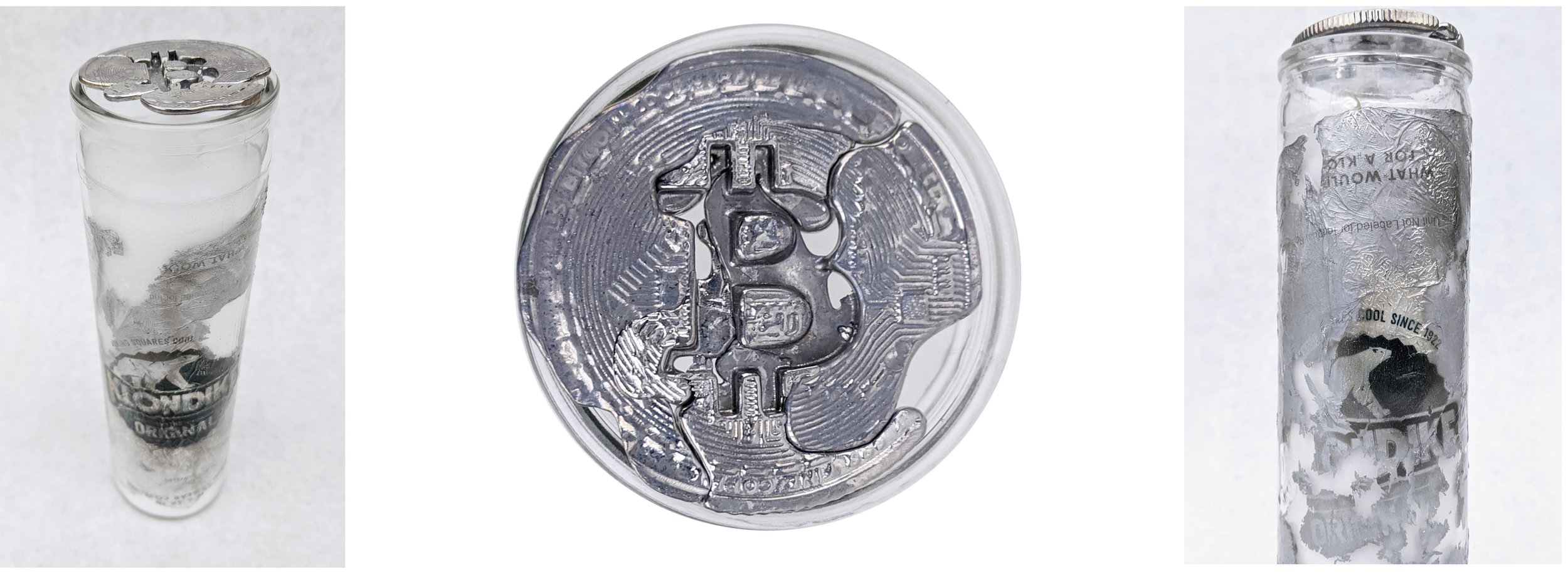
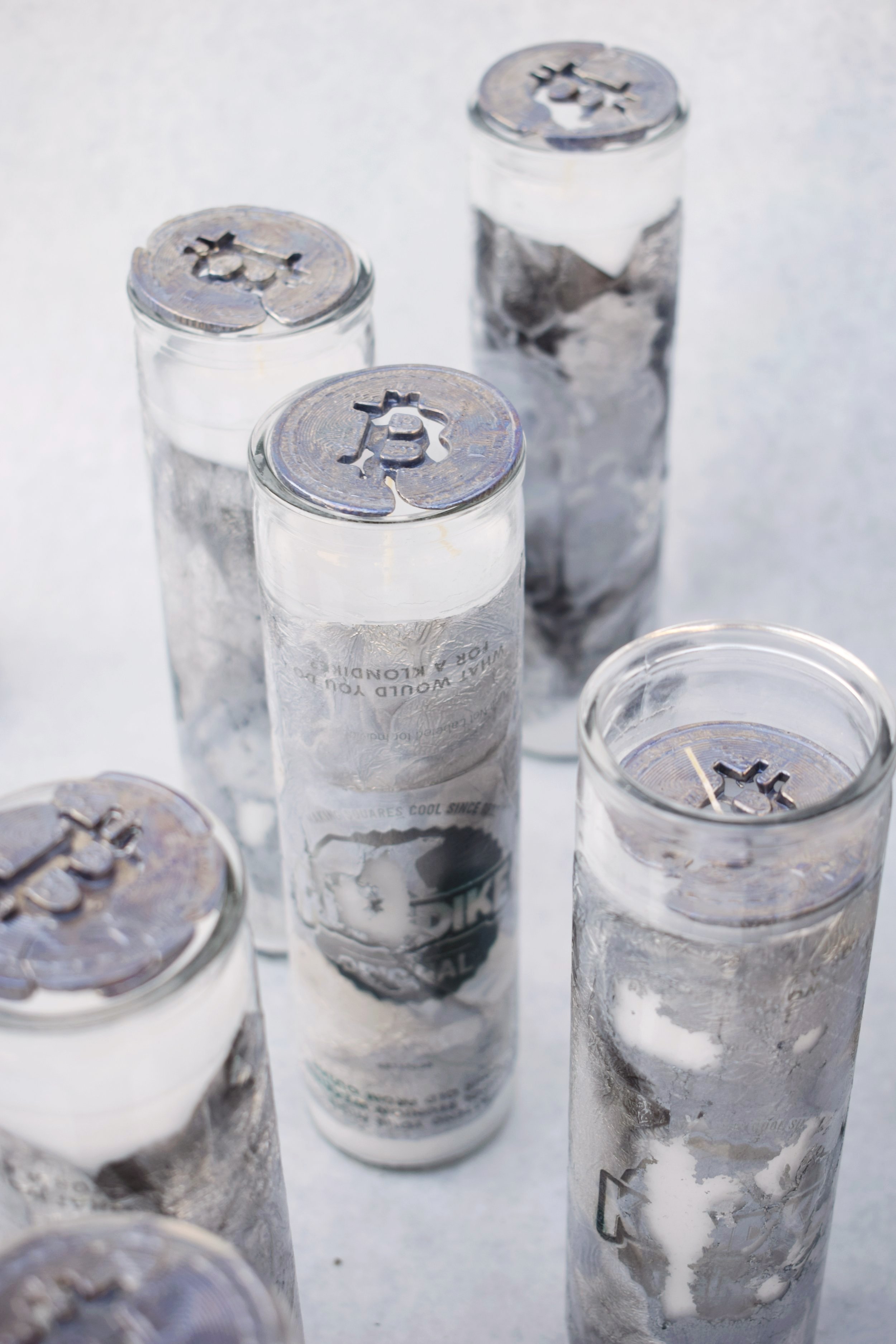
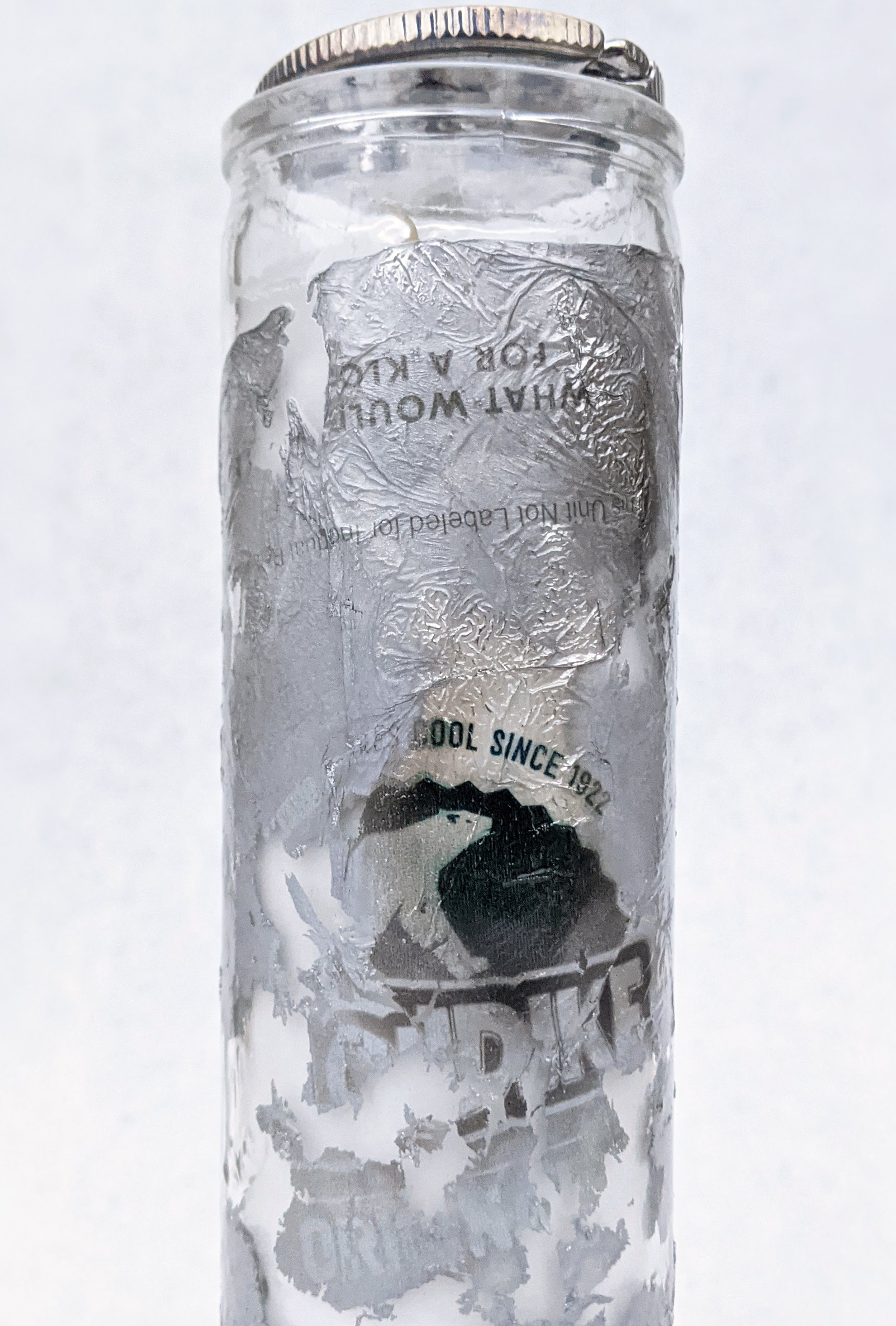
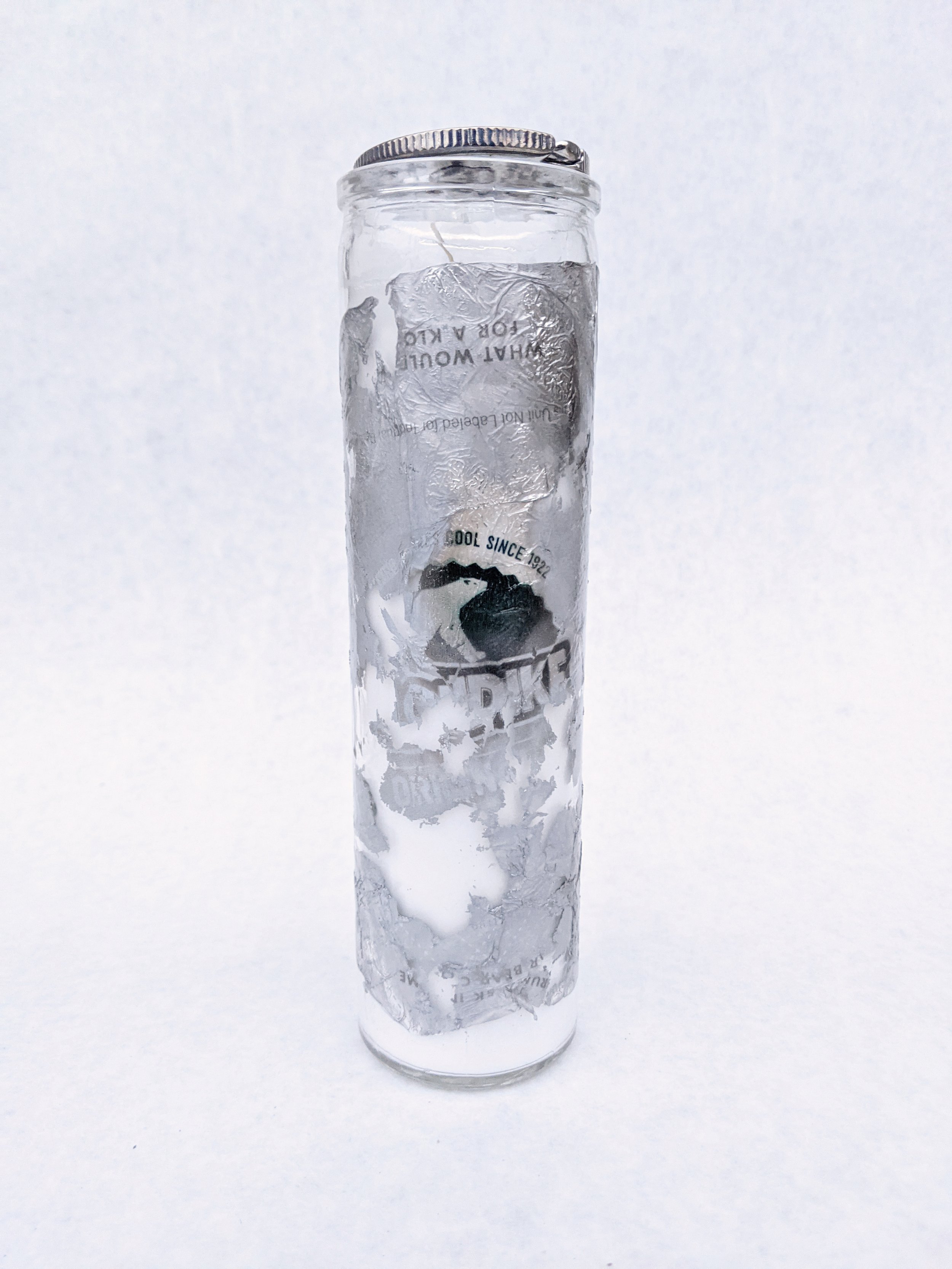

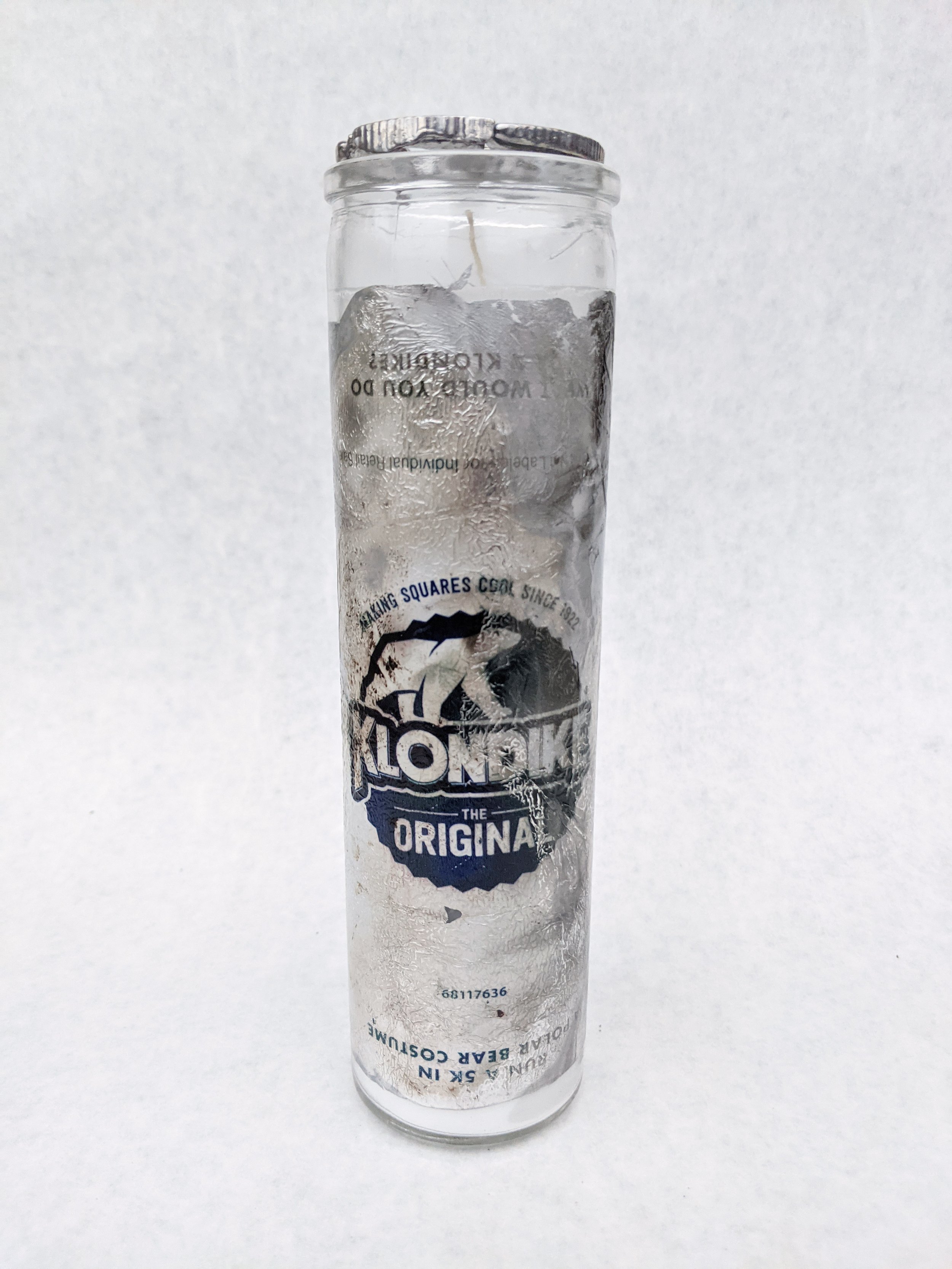
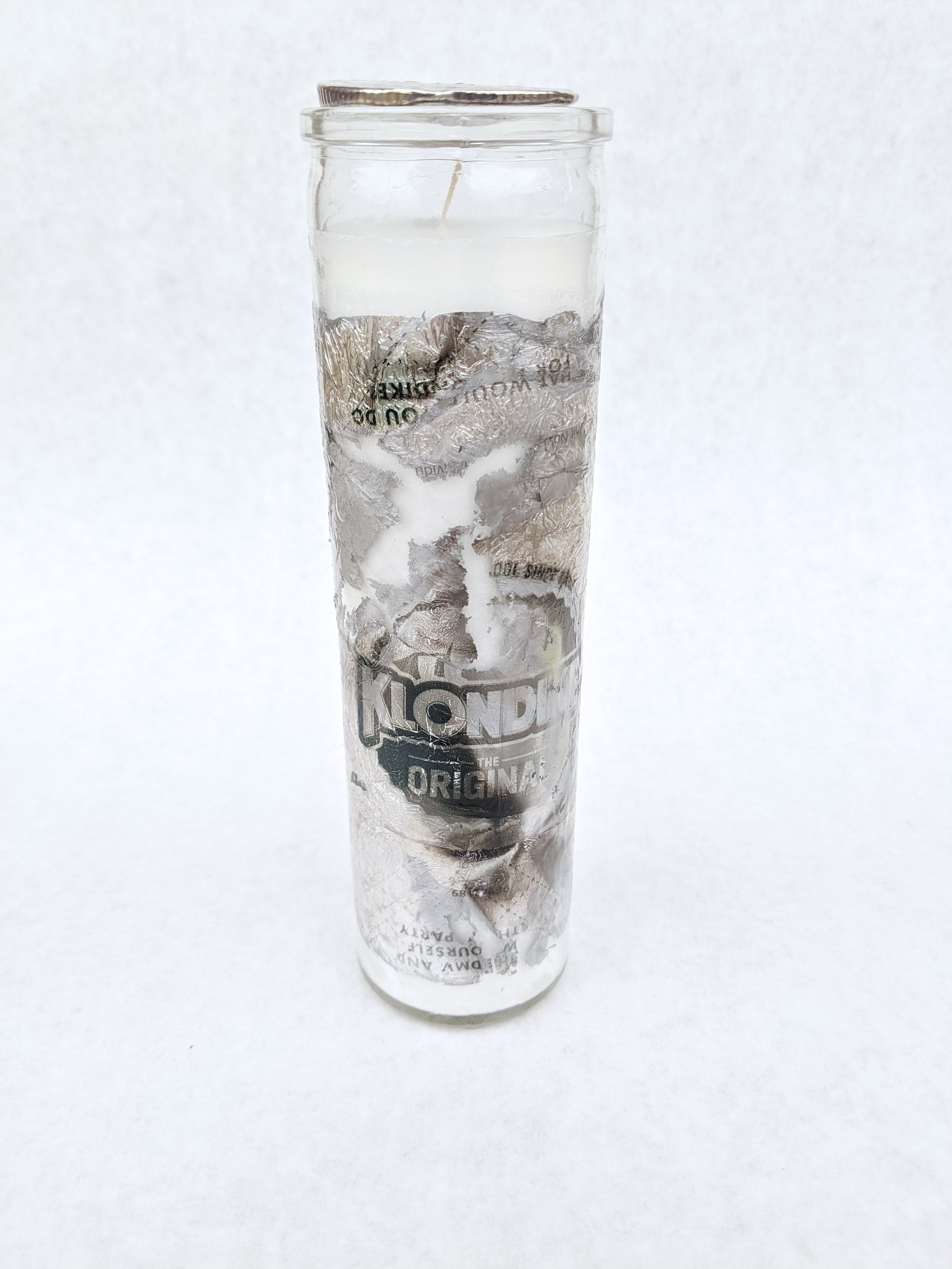
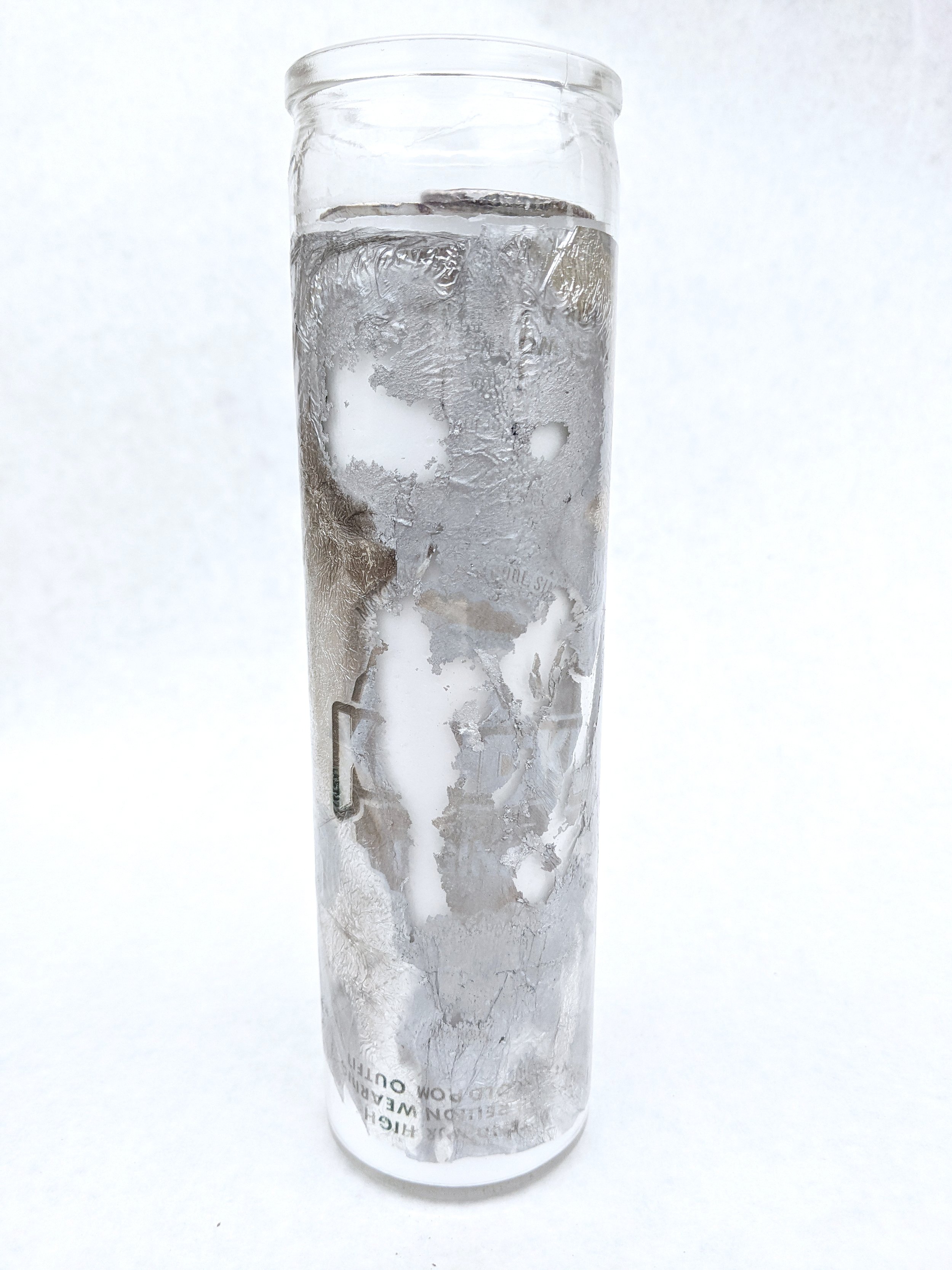
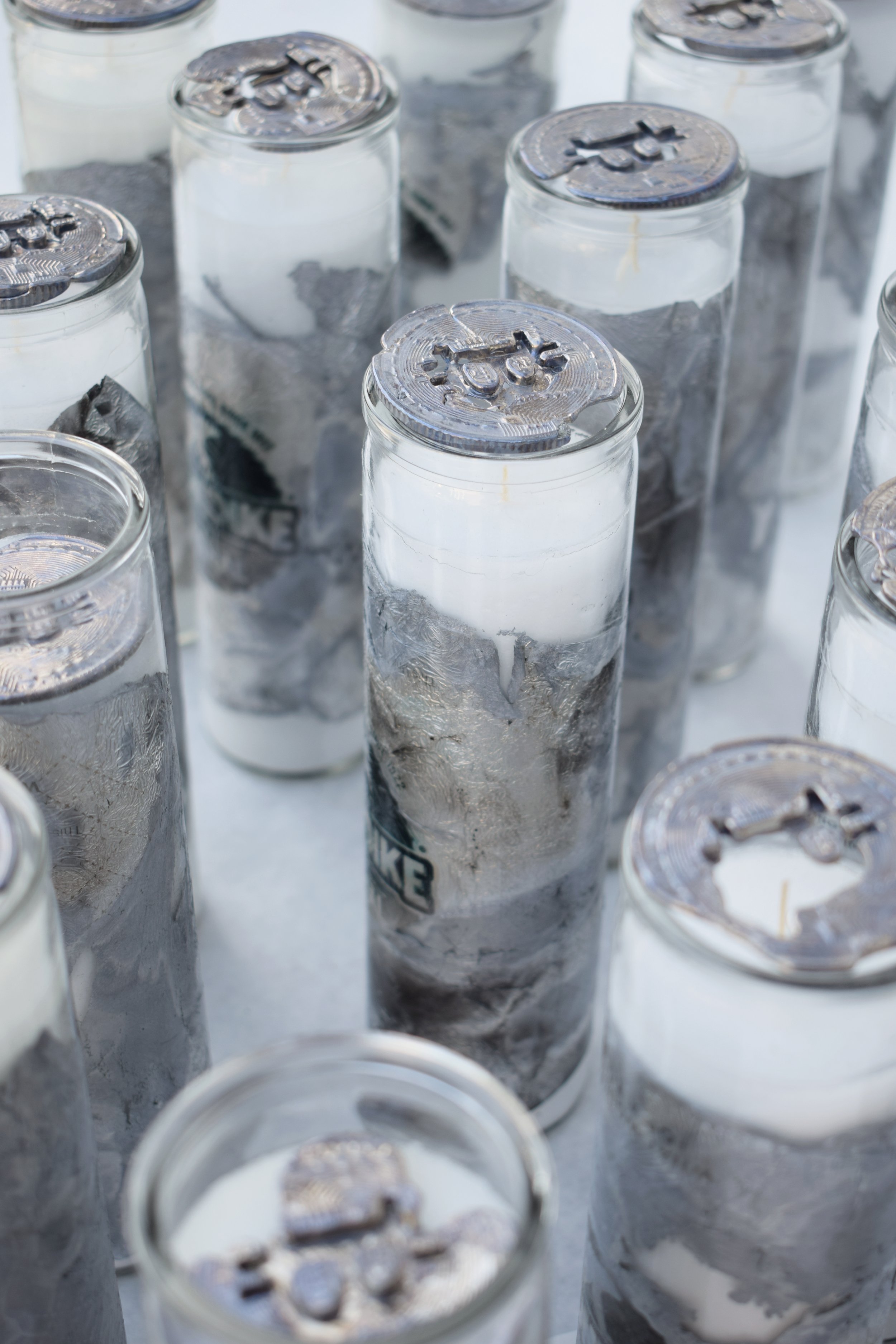
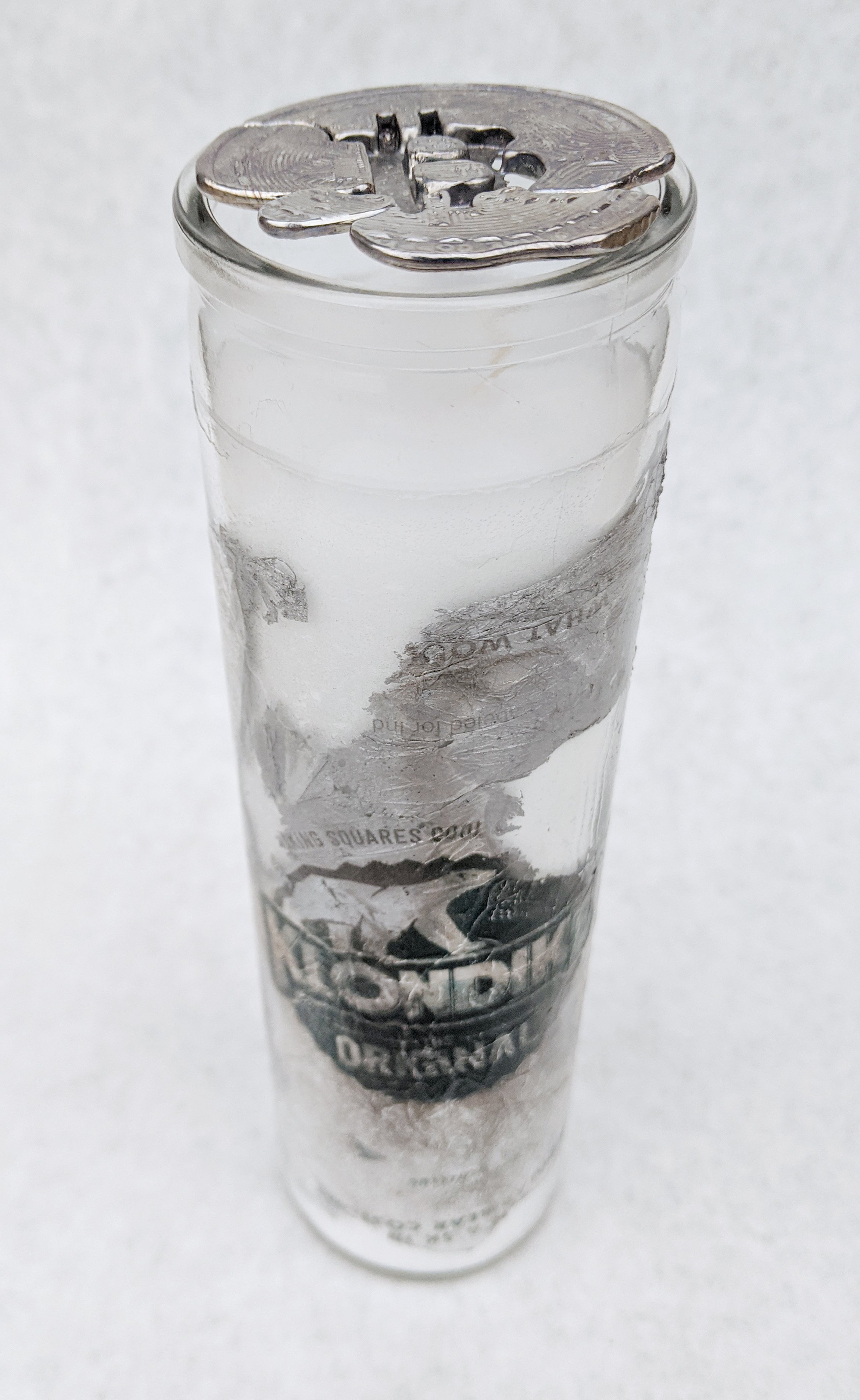
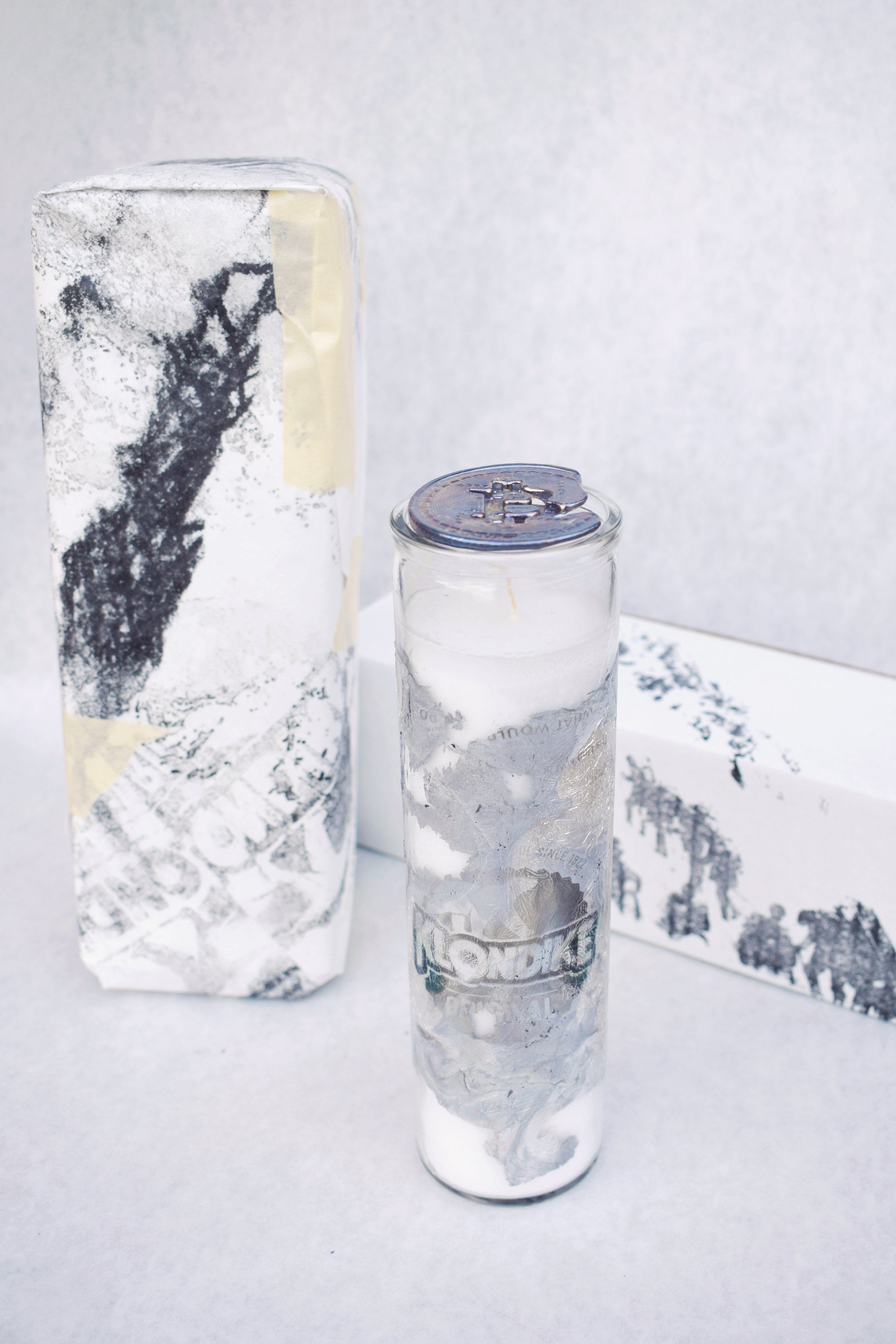
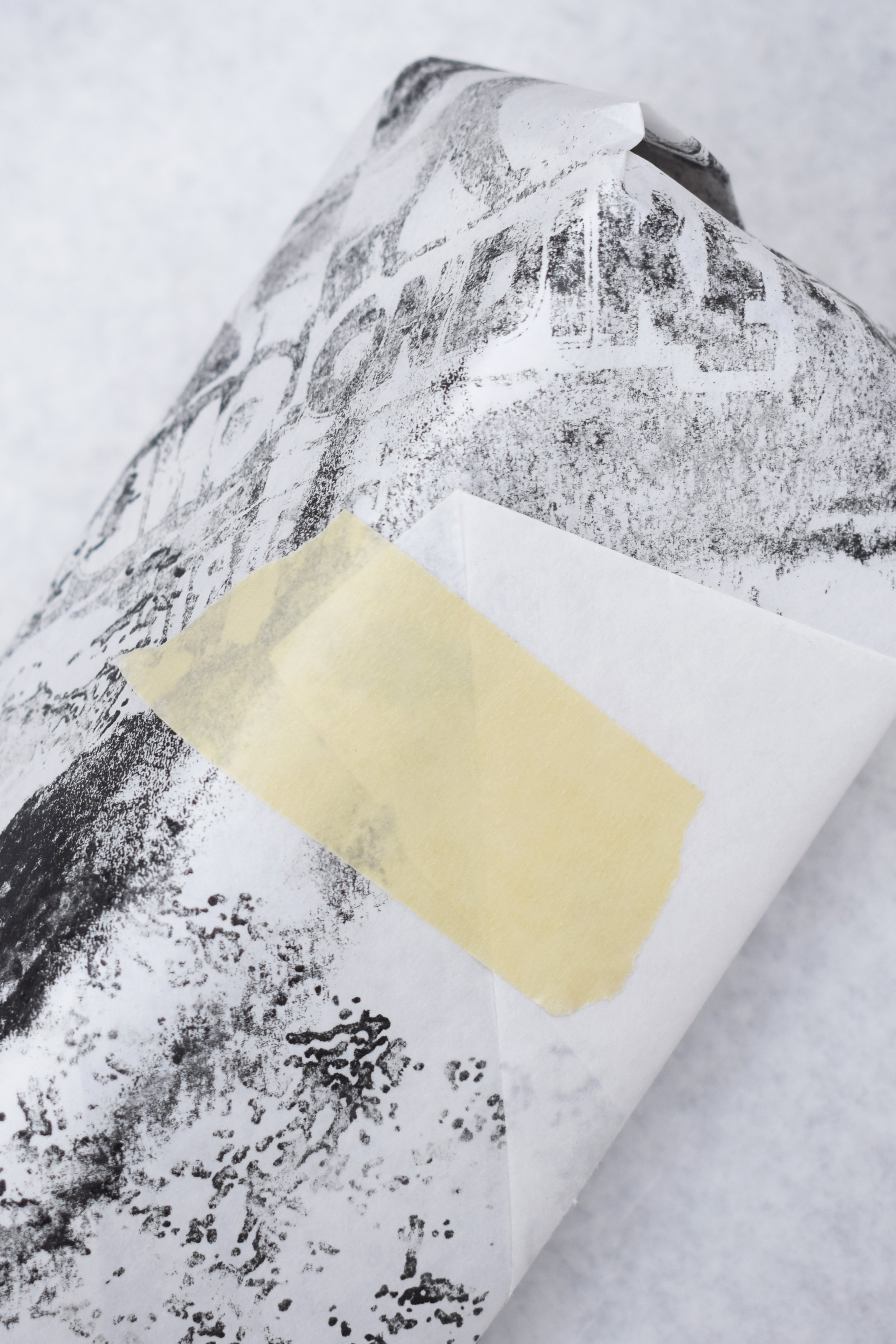
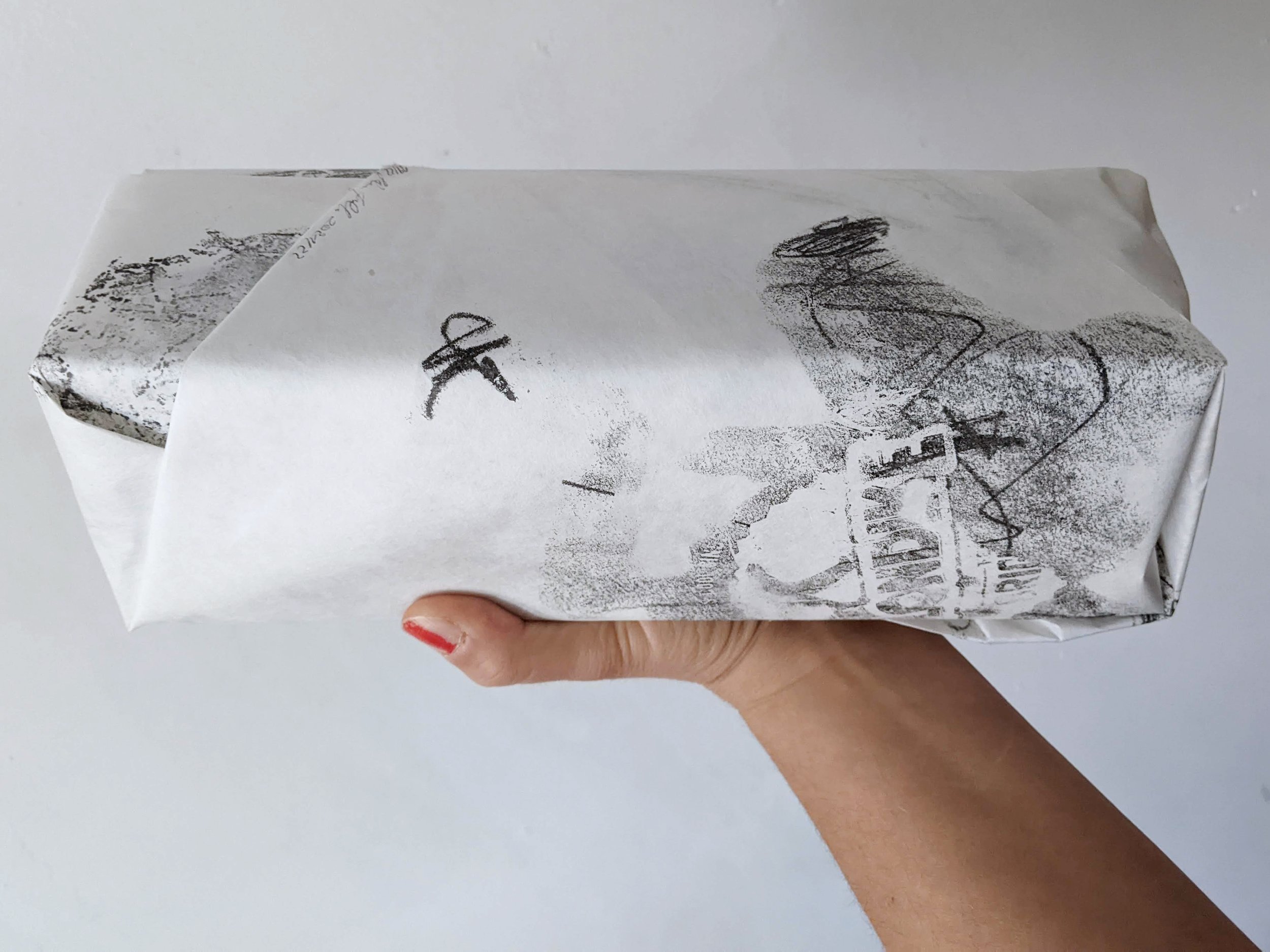

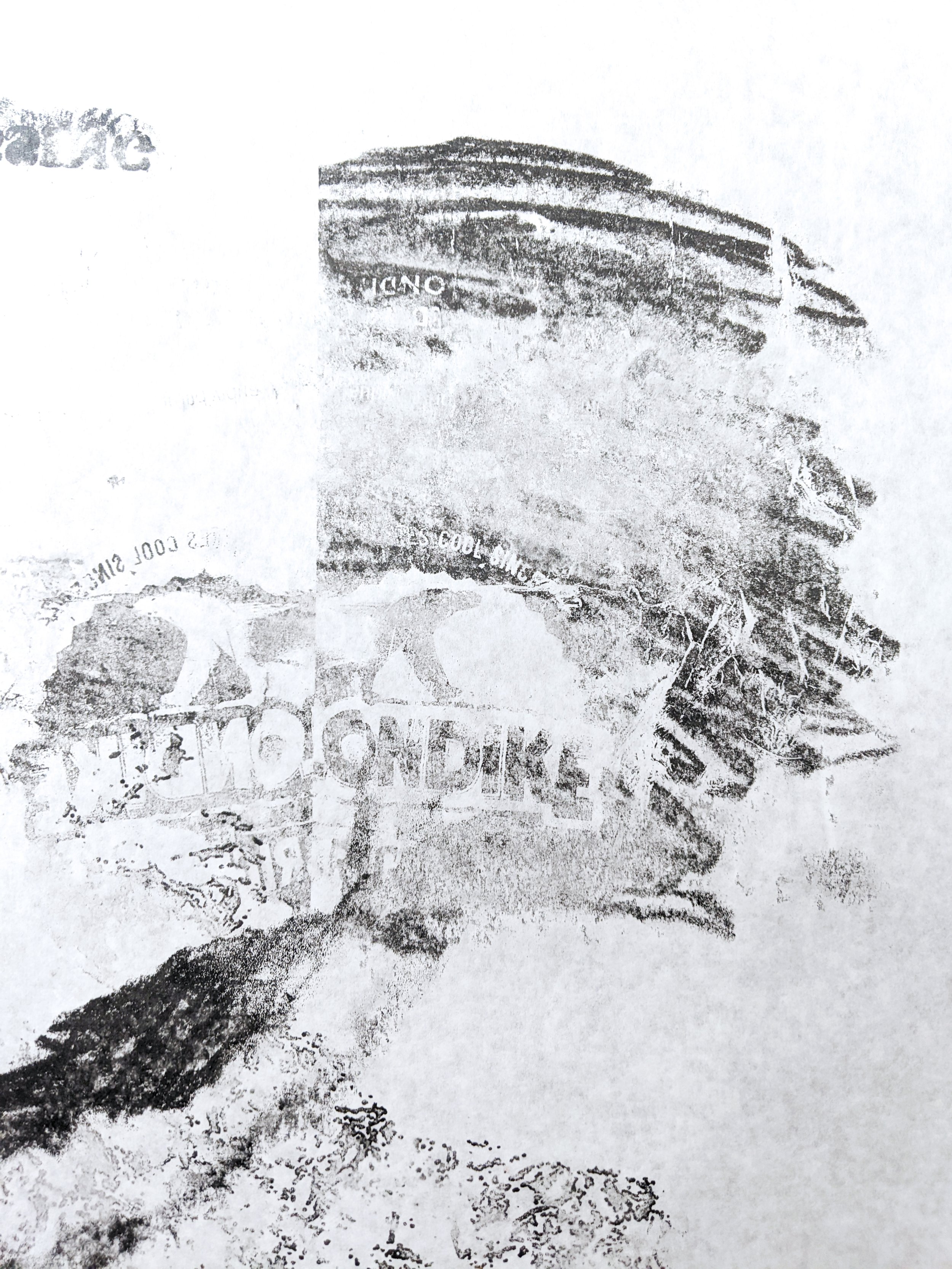


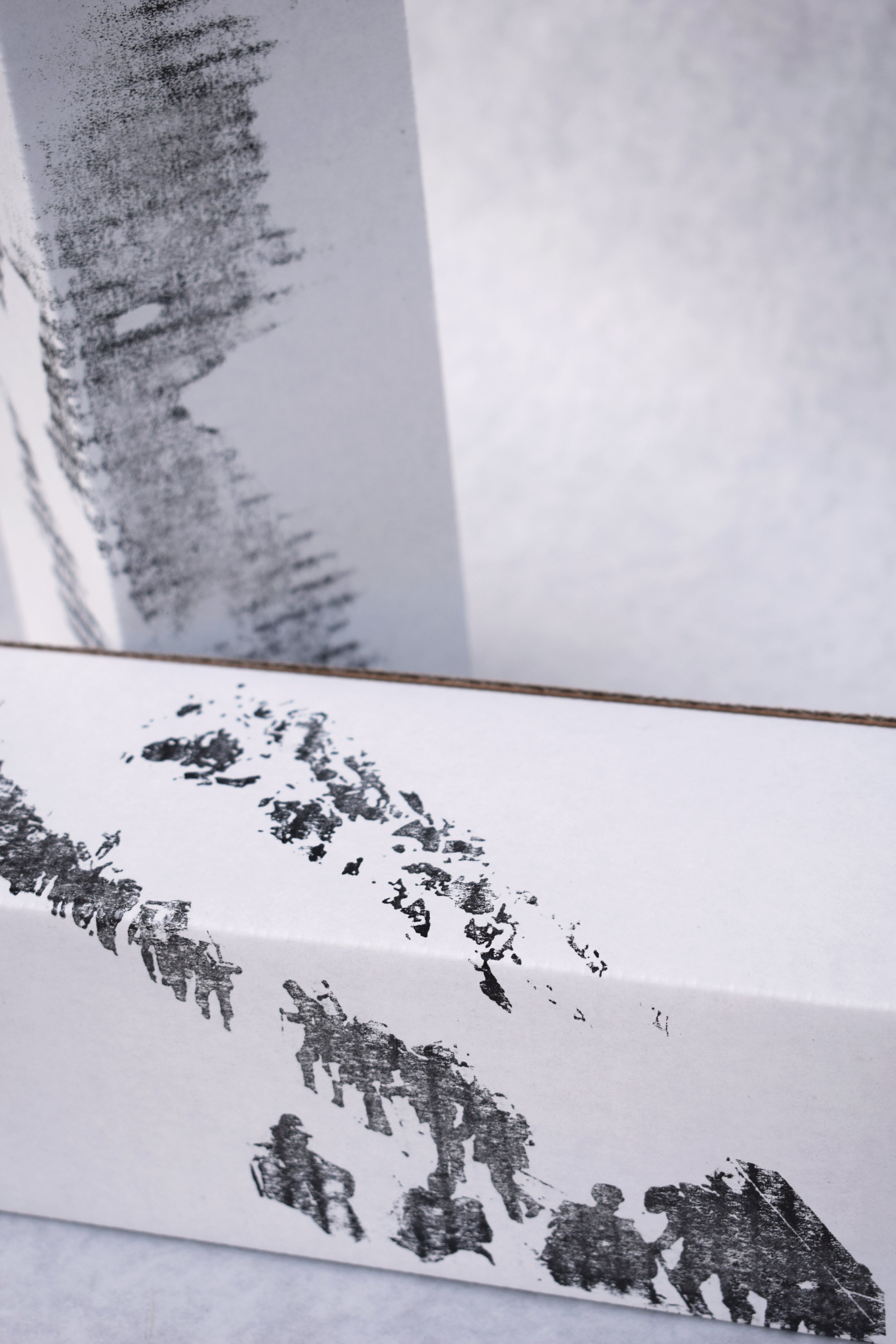
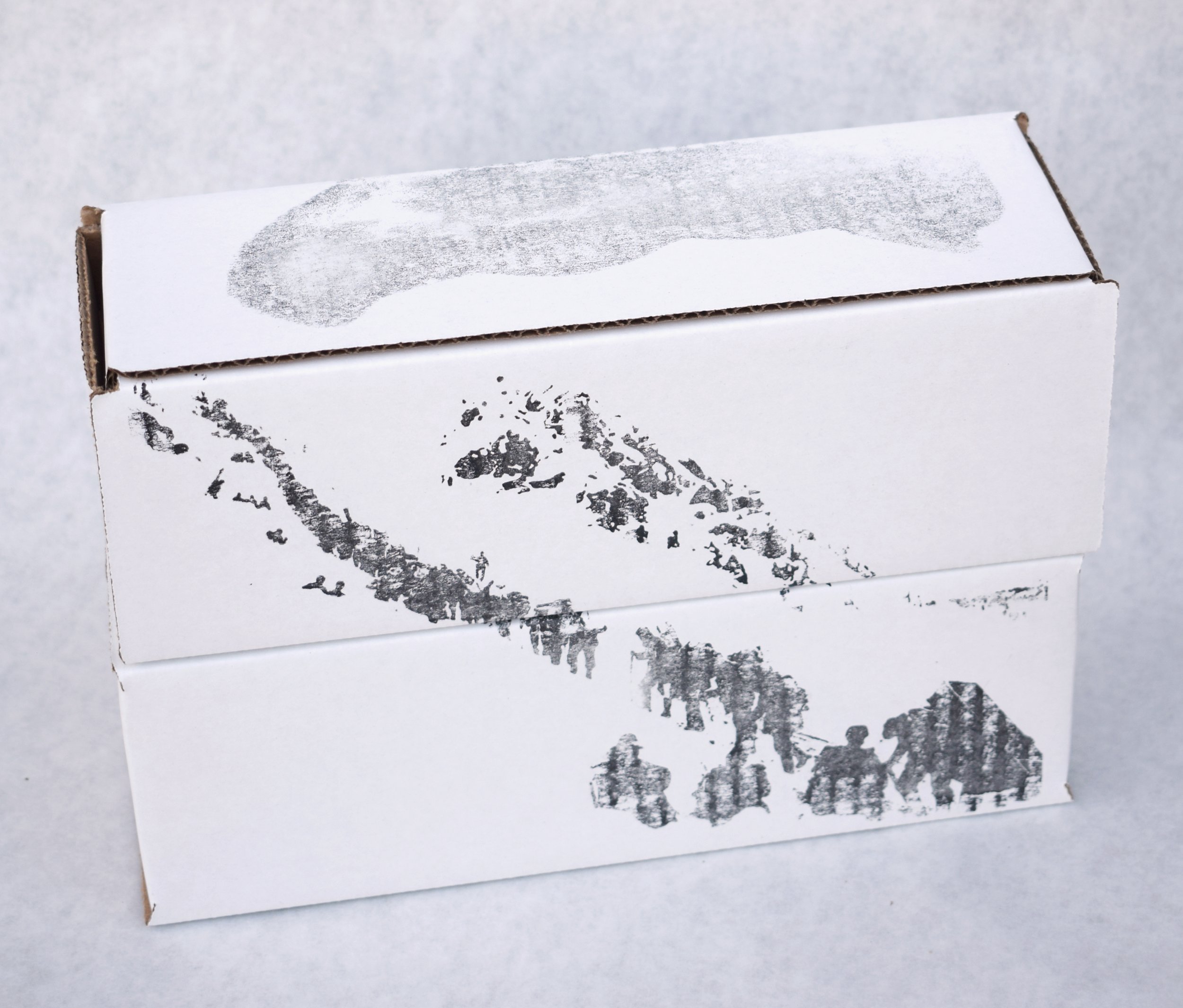


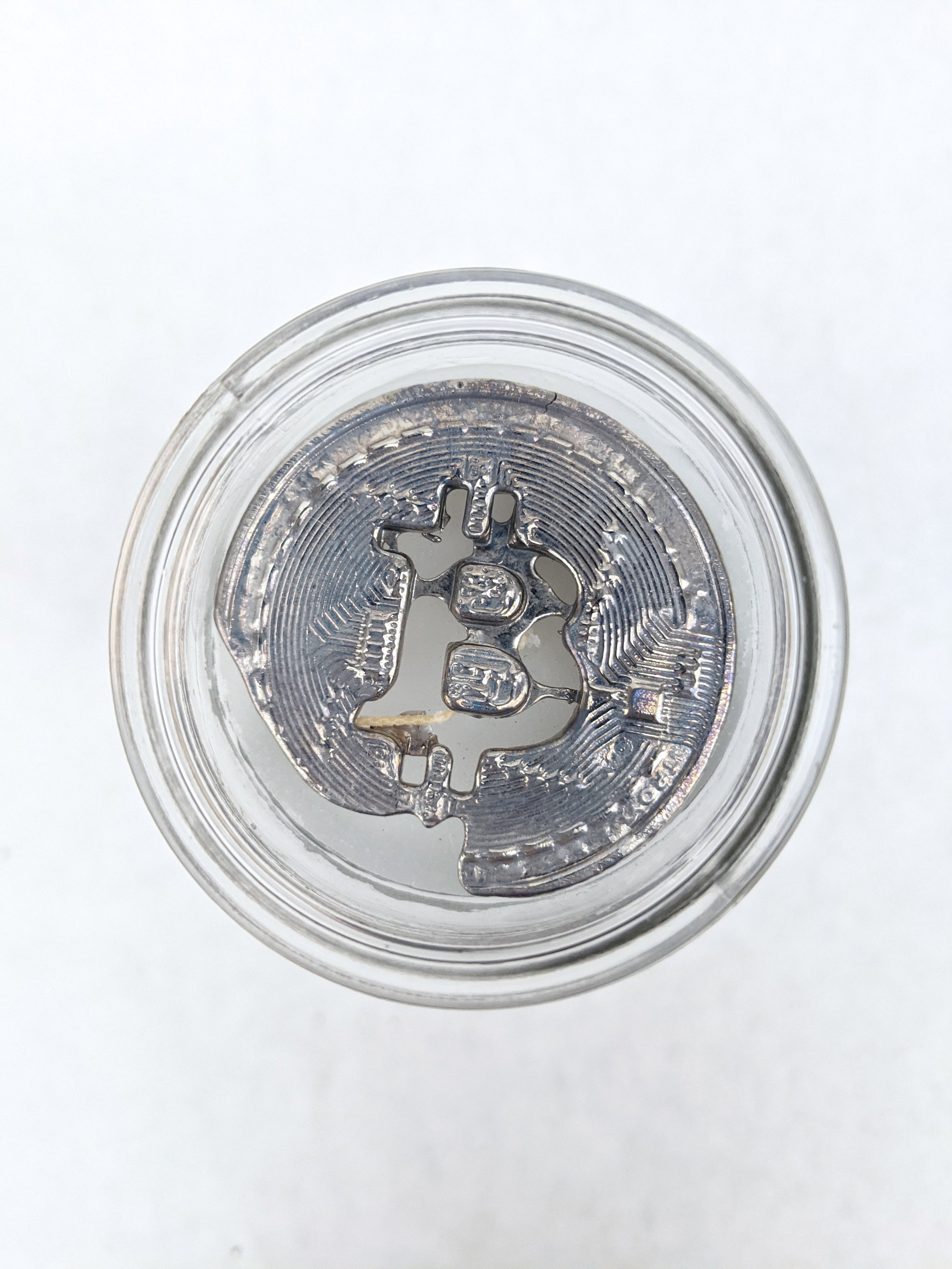
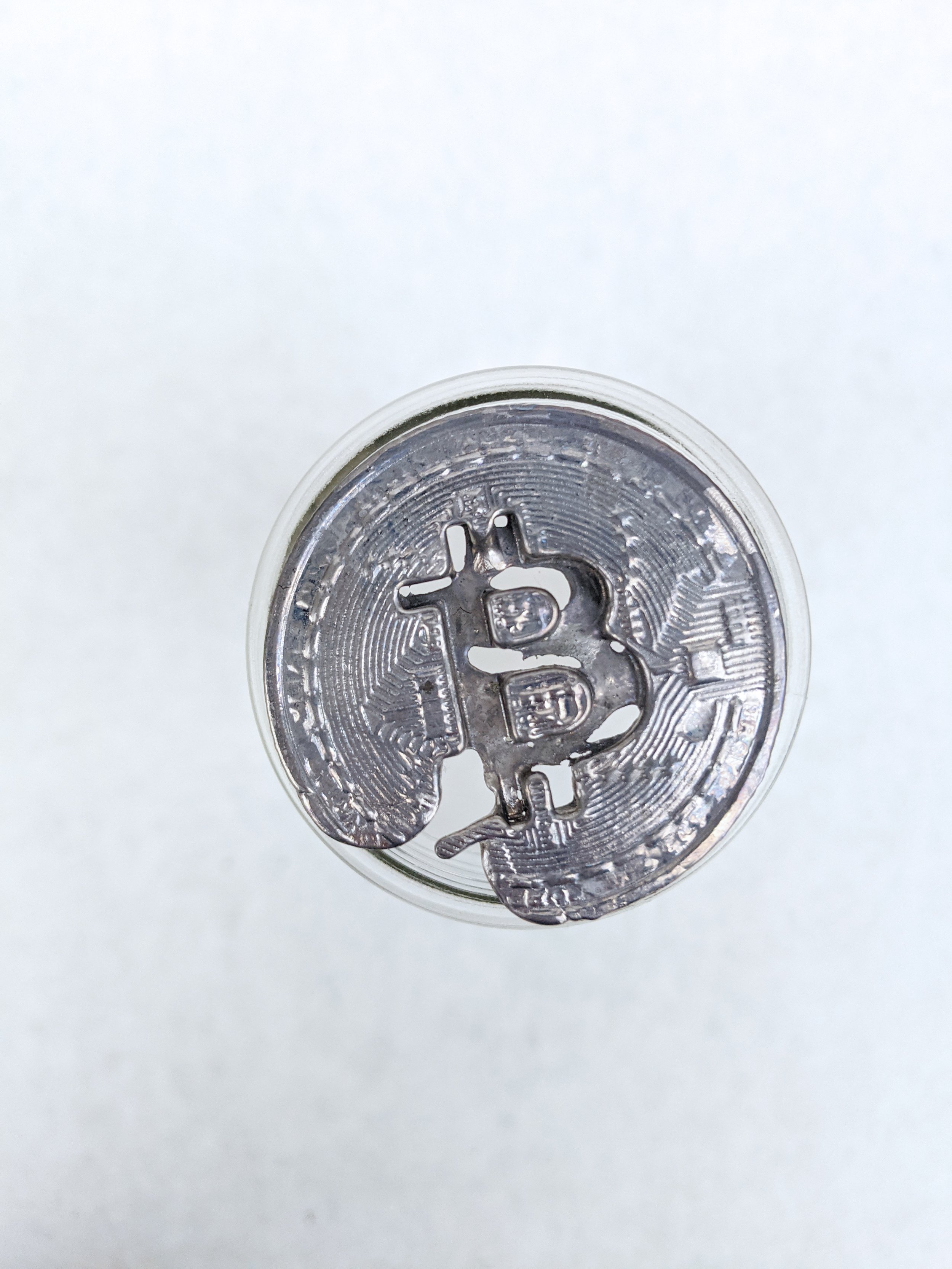
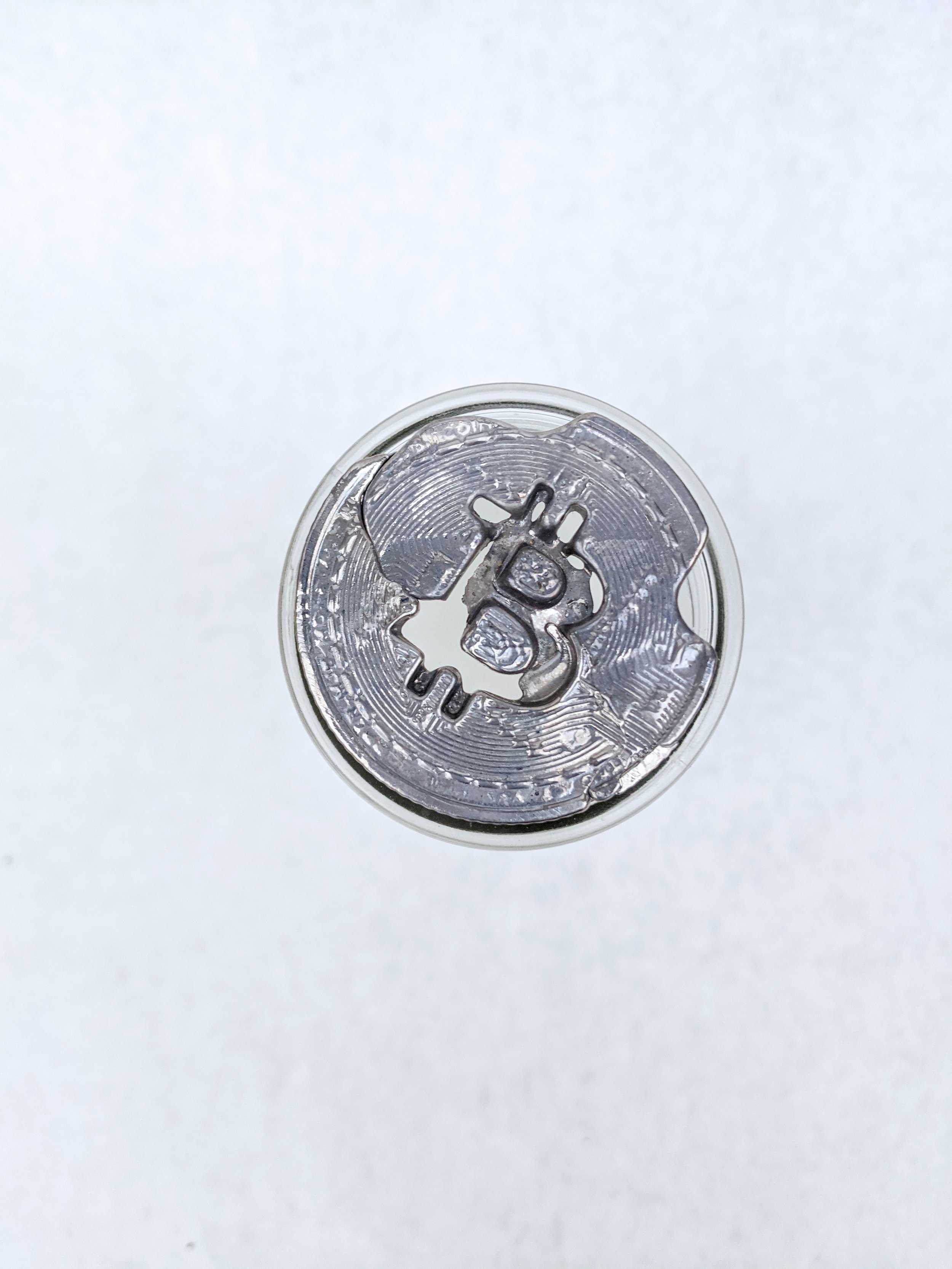
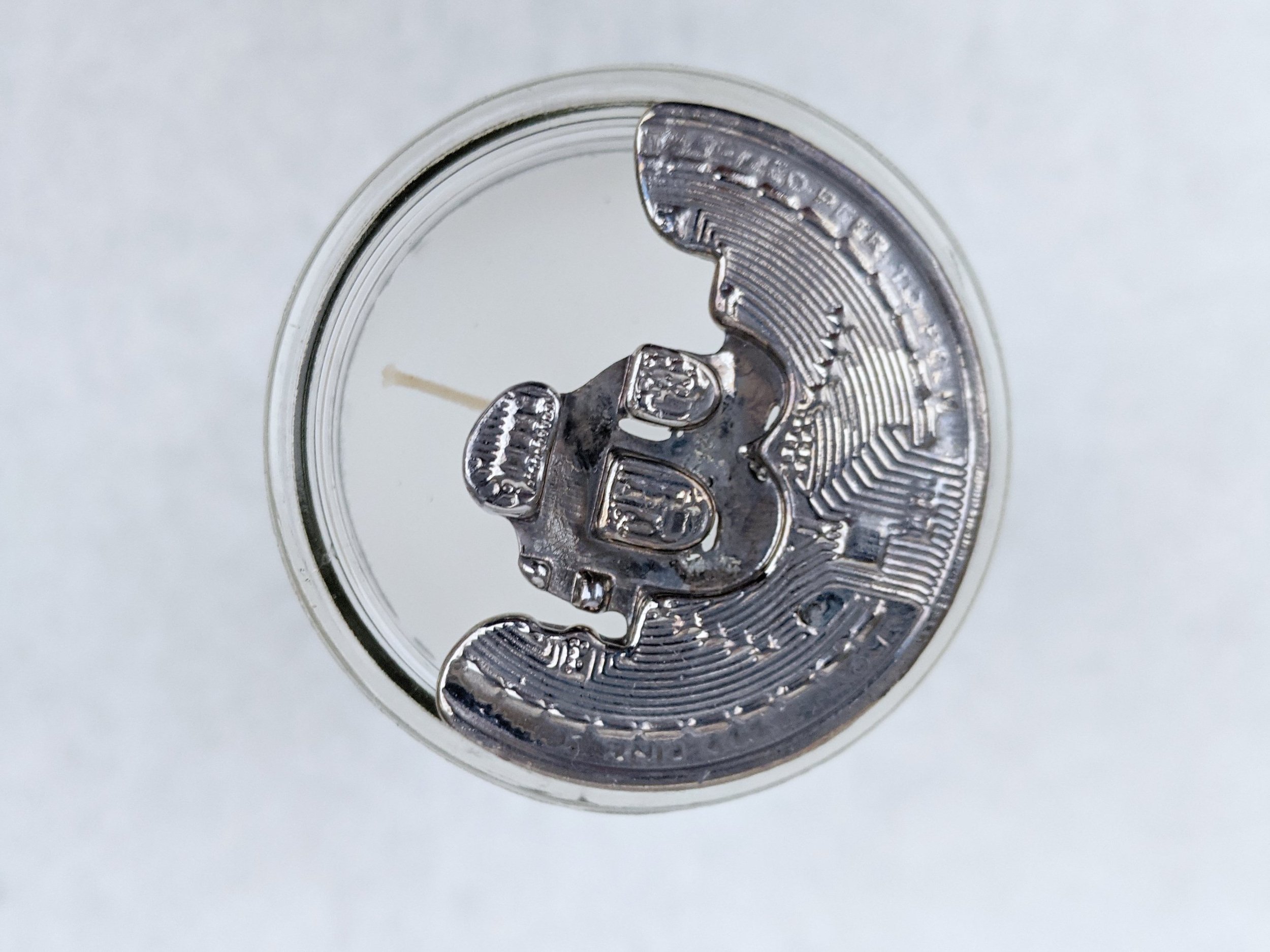
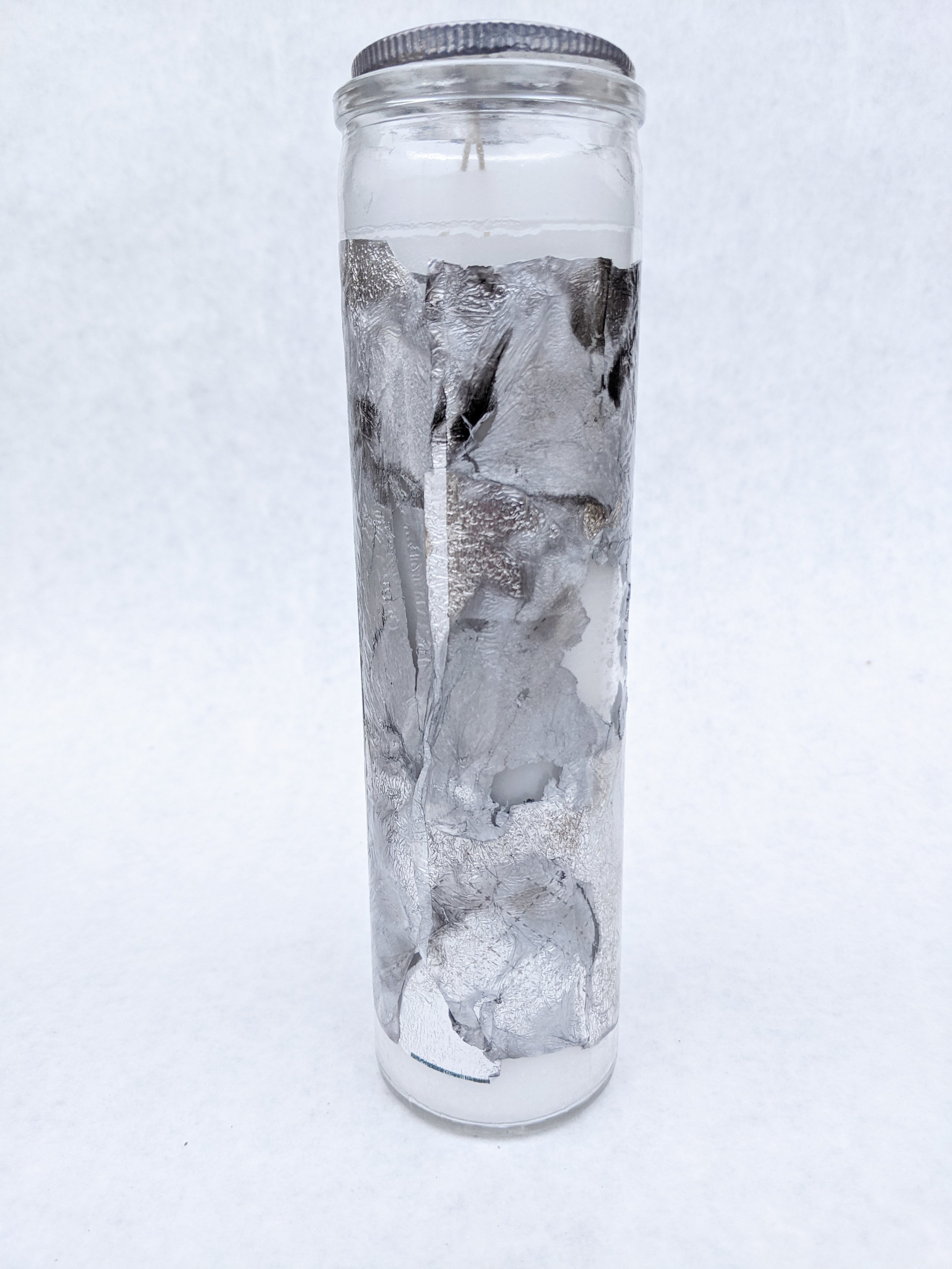
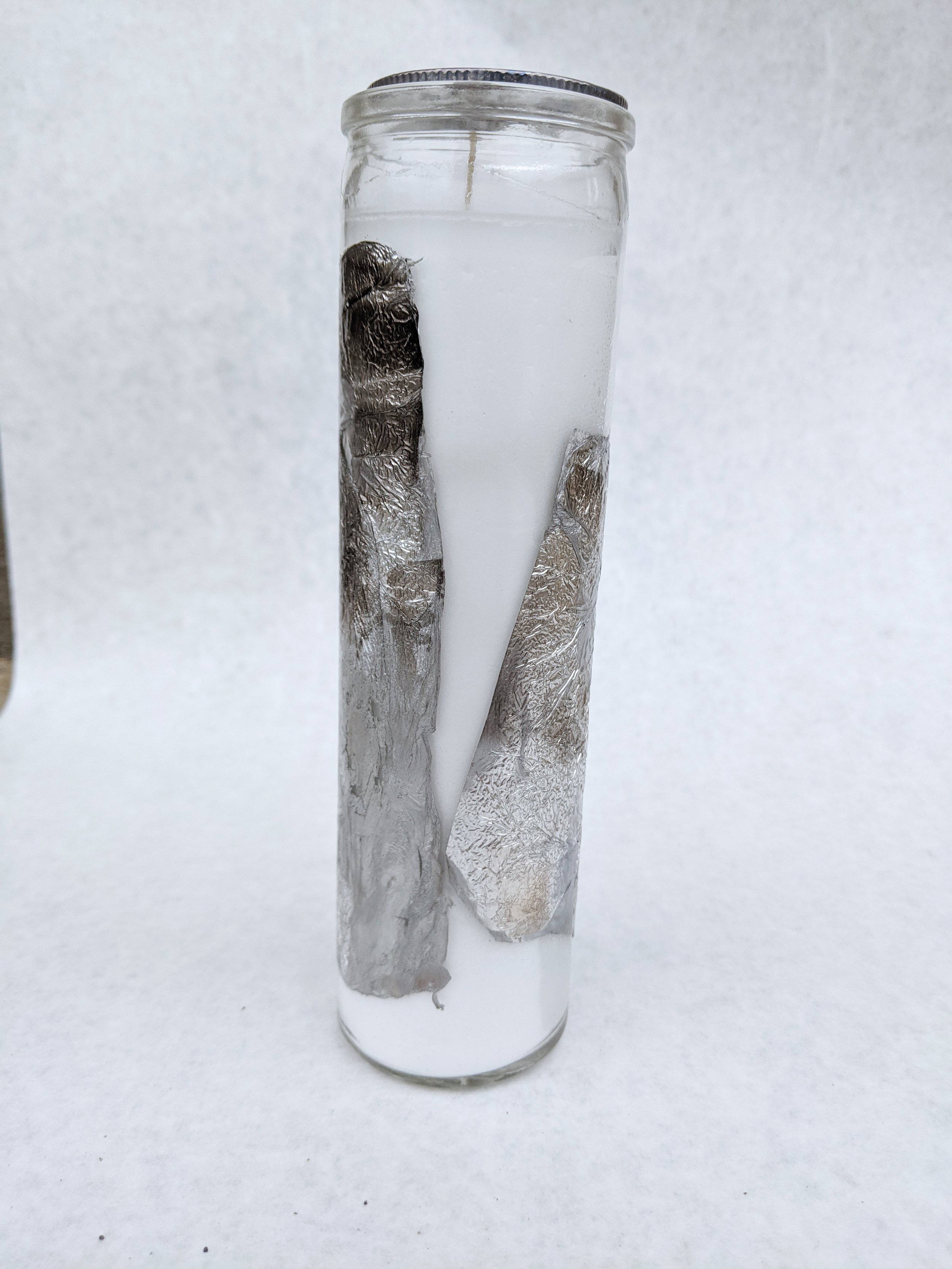
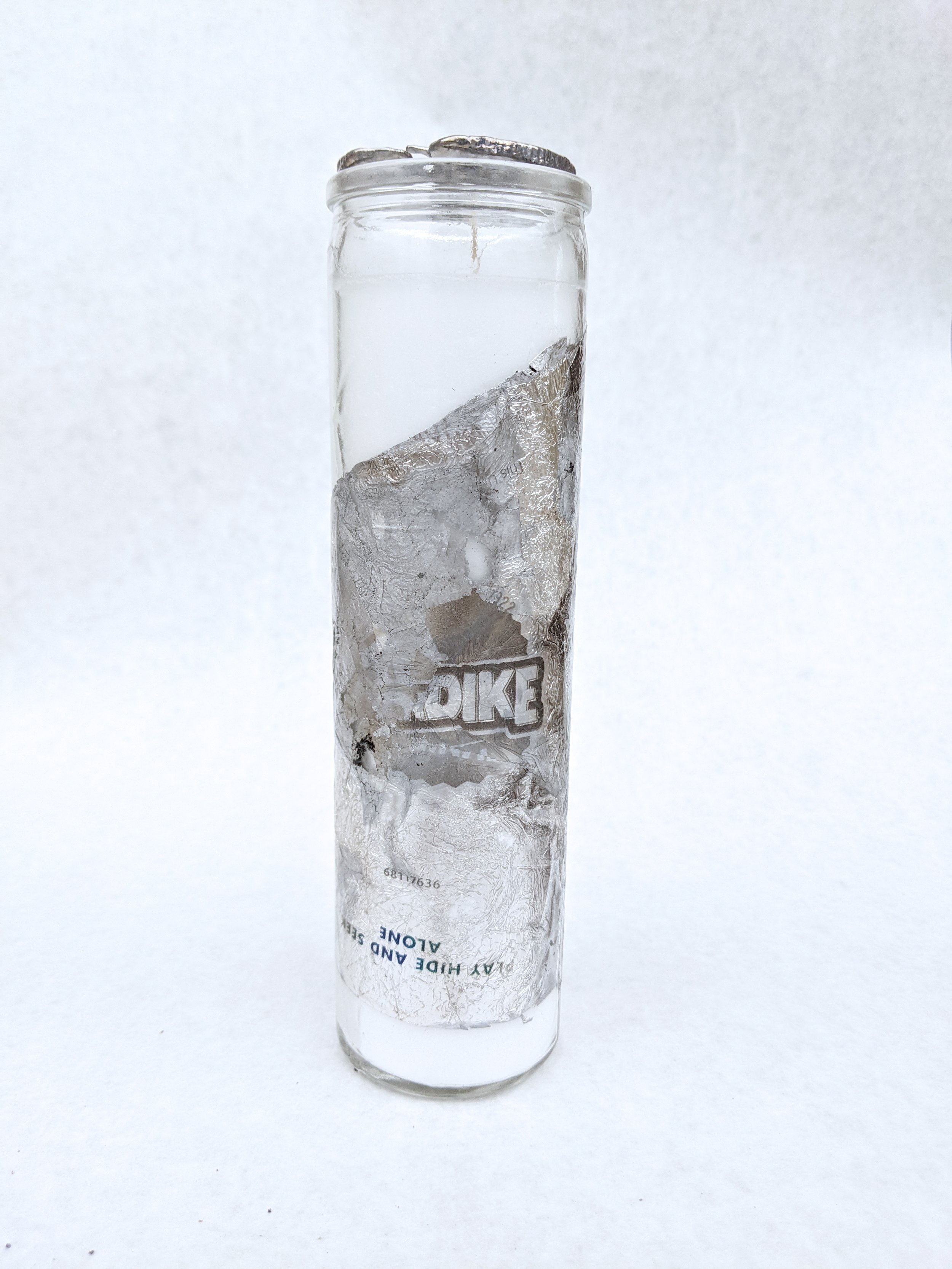


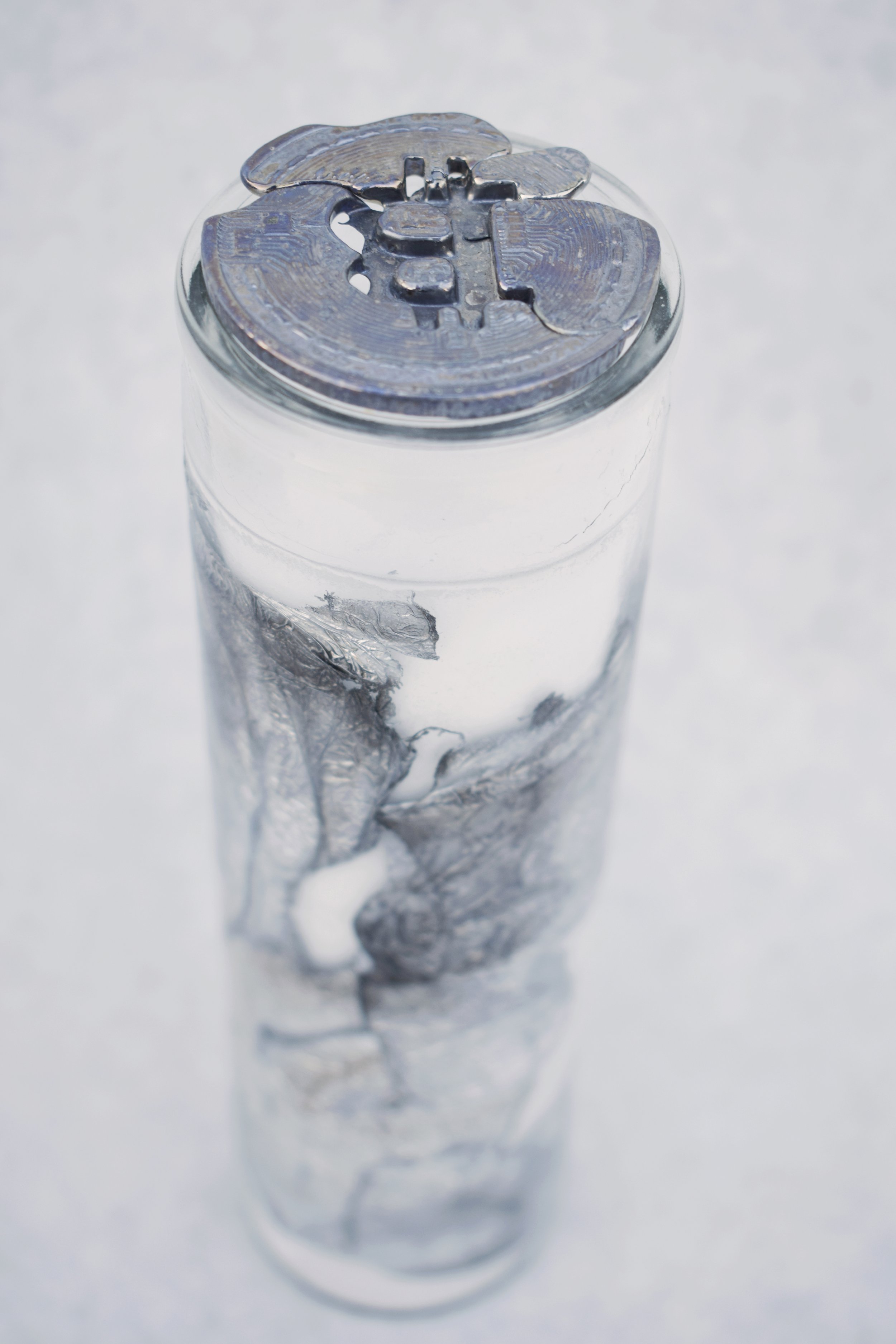
(*1)
In 1897, the discovery of gold in the Klondike Fields triggered the largest and perhaps most senseless gold rush in (American) history. Tens of thousands of people crossed oceans and continents to do so, giving up their professions and investing their entire savings in the journey to the Klondike River (border zone between Alaska and Yukon in Canada, established by the Russians and British in 1825).
The gold prospectors struggled under heavy loads in snowstorms and against icy north winds over the 45-mile-long White Pass, which leads from the port city of Skagway in Alaska over the Coast Mountains to the Canadian border: over cliffs and rivers, over streams and crevices, through ice, mud and swamp, and alongside precipices up to 200 meters deep.
Disease, hunger, injuries, exhaustion, isolation and exposure claimed the lives of many, while others gave up altogether, either turning back or settling in smaller towns along the way. However, for the others it became clear after the life-threatening journey that none of them had won the race to the Klondike. The best claims had already been awarded shortly after the first discoveries were made, and they were awarded to gold seekers who did not need to embark on a several-month long odyssey. “After risking their lives, their health and their modicum of possessions, they have finally arrived at the destination of their desires,” writes the local newspaper the Klondike Nugget, "and now they are beginning to realize that there is nothing left for them here."
Almost 100,000 people made their way to the Klondike. Between 30,000 and 40,000 arrived there. Perhaps half of them then actually searched for gold and only about 4,000 found it. Only a few hundred managed to achieve a decent level of prosperity. Many went broke in the boomtowns along the Klondike River with their saloons, hotels, gambling houses or transport companies, they died of drunkenness or gambled away their fortunes. Some even went insane.
Due to the rise of the gold rush boomtowns, the indigenous Tr'ondek Hwech'in people who originally lived along the Klondike River were largely forced to relocate.
It is estimated that the stampeders spent a total of around 60 million dollars on train tickets, ship passages, equipment and provisions. The gold yield of 1898 on the Klondike was around ten million dollars. Pierre Berton writes that from an economic point of view, “it was the most pointless trek in the history of mankind”. A huge waste of money by people who, for the most part, didn't have a cent to give away.
Even today, people still search for the coveted precious metal on the Klondike. If the ‘miners’, i.e. the gold diggers, find it, they gamble away their find in Canada’s oldest saloon in Dawson City.
Photo: Selma Gültoprak